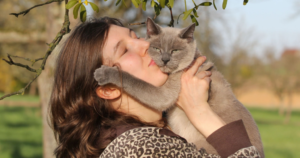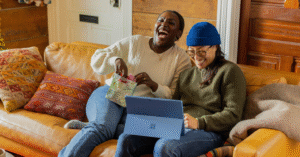Have you ever walked away from a conversation with that nagging “something’s off” feeling?
Most of us have.
What we often miss is that our brain already spotted tiny physical clues—it just didn’t pass the memo up to conscious HQ in time.
Psychologists have spent decades cataloging those clues.
So, let’s break down eight of the sneakiest body‑language signs that someone might be bending the truth.
Ready to sharpen your radar?
1. The nose‑touch reflex
You’ve seen it: a quick rub, scratch, or pinch at the bridge of the nose right after someone speaks.
Why does it matter?
Mild stress boosts blood flow and histamine in nasal tissue, making it tingle.
Liars often trigger that mini histamine spike because deception is, well, stressful.
I first spotted this during a corporate negotiation years ago.
The other manager promised the delivery schedule was “locked.”
Scratch‑scratch went his nose.
Sure enough, the dates slipped two weeks later.
Since then, I’ve started noticing the same behavior in meetings, interviews, even casual conversations.
It’s not always a lie—but when paired with a vague or overly rehearsed explanation, it’s a red flag worth noting.
2. Feet that point toward the exit
“As Seneca put it, ‘Truth is ever to be found in simplicity.’”
Ironically, it’s the simplest body part—our feet—that blab the loudest.
When someone’s words say I’m fully here but their shoes angle toward a door, they’re subconsciously prepping for flight.
The brain wants distance from discomfort, so it pivots the lower body first.
I caught this cue on a first date.
Everything she said sounded interested, yet her sneakers aimed at the restaurant entrance all night.
Turns out she’d agreed to the outing only to make her ex jealous.
Awkward, but a good lesson: trust the toes.
The feet often reveal intent long before the face does. It’s like your body is already halfway out of the situation—even if your mouth is still playing along.
3. Sudden statue mode
Most people gesture naturally while talking.
If those hands freeze the moment a tough question lands, take note.
That snap‑to‑stillness is the nervous system slamming the brakes to avoid leakage.
Psychology calls it the freeze response—one branch of the classic fight, flight, or freeze trio.
Liars often choose “freeze” because it feels safer than fidgeting where mistakes might slip out.
I’ve mentioned this before but during a panel interview I conducted, one candidate’s arms became plank‑stiff only when salary expectations came up.
His résumé math later revealed a few “round‑up” liberties.
What’s wild is how often people don’t realize they’re doing this. Their mind is calculating what to say next, while their body goes into “pause and protect” mode.
4. The muffled mouth
Watch for fingers grazing lips, a hand resting over the mouth, or even a coffee mug parked as a partial barrier.
The gesture dates back to childhood—remember covering your lips after blurting a secret?
Adults do the grown‑up remix when they fear the truth might escape.
Covering the mouth is one such autopilot maneuver.
Bonus tell: some folks replace the hand with an object—phone, notebook, takeaway cup—so the block looks casual.
It’s like an unconscious “shhh” to themselves.
And once you know to spot it, you’ll notice it more than you expect—especially in high-stakes conversations.
5. Eye contact that’s a shade too perfect
Hollywood taught us liars avoid eye contact. Many bought that memo and over‑corrected.
So instead of shifty eyes, you get an unblinking laser stare meant to prove sincerity.
Quick test: count blinks.
Average relaxed blink rate sits around 15–20 per minute.
In “laser mode,” blinks drop drastically—sometimes to five or fewer.
That deliberate effort drains cognitive bandwidth, which can trip them up in follow‑up questions.
It’s not just the lack of blinking—it’s also the unnatural stillness that comes with it.
That intense stare often signals a performance rather than presence.
6. Blink‑rate whiplash
The flip side arrives when someone’s blink rate spikes after they finish talking.
Cognitive scientists link this to adrenaline dumps.
Once the lie is out, the body releases stored tension—much like a sprinter breathing hard after the finish line—and the eyelids flutter.
You’ll see three‑to‑five rapid blinks in the first second or two after the statement.
It’s subtle but unmistakable once you know it.
I noticed this during a friend’s “white lie” about why he bailed on our group trip.
His eyes fluttered like Morse code right after explaining the urgent work project—which Snapchat later proved didn’t exist.
That post-lie blink storm is like the nervous system exhaling after a bluff. It’s a mini moment of relief mixed with “I hope they bought it.”
7. The single‑shoulder shrug
A true “I don’t know” shrug involves both shoulders lifting evenly.
A single shoulder hopping up for half a beat, however, suggests only partial commitment.
Body‑language researcher Dr. Paul Ekman called this a sign of incongruence—the nonverbal system isn’t fully backing the verbal claim.
Example:
“Sure, I sent that email yesterday,” paired with a micro shrug on the right side.
The body is hedging its bet in case the lie gets called out.
It’s like their mouth is saying yes, but their body is sneaking in a quiet “…maybe.”
This subtle contradiction can be incredibly revealing if you’re paying attention.
8. Micro expressions of fear or contempt
These are the crown jewels—blink‑and‑you’ll‑miss‑them facial flashes lasting 1/25th of a second.
Fear might appear as raised inner eyebrows and stretched lips; contempt shows as a corner‑mouth smirk.
Catching micros takes practice.
I run short “spot the flash” drills while watching interviews online—pause, rewind, slow‑mo.
Over time, your brain speeds up the capture rate.
Alan Watts once joked, “We seldom realize, for example, that our most private thoughts and emotions are not actually our own.”
Those micro spasms prove the point—the face leaks what the tongue tries to hide.
Even highly trained liars struggle to suppress these flashes.
They leak through the cracks before logic has time to catch up.
Rounding things off
No, you don’t need to become a human polygraph machine—and please don’t treat every itch or blink as a smoking gun.
Context matters.
Baseline matters.
Your own bias matters.
But sprinkle these eight cues into your observation toolkit and you’ll spot patterns faster than most.
It’s like upgrading from a blurry webcam to HD: the picture was always there—you just sharpened the resolution.
One last tip: use your powers for good.
Reading body language isn’t about ambushing people; it’s about steering conversations toward clarity.
In a world overflowing with half‑truths, offering a space where candor feels safe can be its own superpower.
And remember, the best communicators aren’t just great talkers—they’re great observers.
When your gut says something’s off, now you’ll have the language (and science) to back it up.
















